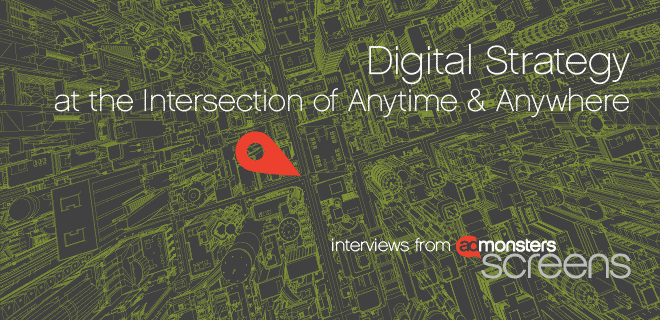
Two central themes emerged from AdMonsters Screens held in London this past November: screens are everywhere and consumers can be reached on more than one at a time. Thanks to the proliferation of the Internet and mobile devices, the opportunity to interact with users anywhere and everywhere is totally viable – however, actually making that happen takes a bit more sweat equity.
During the conference, AdMonsters took aside several prominent presenters and attendees to ask them just how publishers, agencies and brands are approaching the multi-screen opportunity. We present them with the support of Adobe Auditude, and add that Conference attendees and paid members can enjoy full-length keynote videos as well as presentations from most of the sessions.
Steve Allison, Adobe
Adobe Technical Evangelist Steve Allison, sat down during our November 2012 AdMonsters Screens event to talk about the opportunities and obstacles of multiple platforms, increasing engagement across screens and platforms, among other questions posed by the age of multi-screen. Distributing and reusing content across multiple screens is a continuing obstacle for many publishers, Allison says. More important, publishers must “respect the soul of a device,” or understand the nature of interactions on a certain platform, to create fully engaging content for consumers.
Tom Bowman, BBC Worldwide
BBC Worldwide VP of Strategy and Global Ad Sales Tom Bowman talks the pros and cons of multi-screen, including whether or not consumers will find it hard to divide their attention between multiple devices. According to Bowman, consumer distraction is nothing new. People watch television while being distracted by their various devices (and dinners) daily, he says. Moreover, multiple screens help continue consumers’ connections with content after the fact.
Michal Tuszynski, Viacom
Michael Tuszynski, product manager at MTV Networks (a division of Viacom), discusses his interest in second-screen applications. For Tuszynski, the interaction between devices is key, especially when a platform can help complement the content that exists on another screen. In addition, multiple screens allow advertisers to more directly and smoothly integrate advertising into the consumer experience.
Conor Mullen, RTE
RTE commercial director Conor Mullen says the biggest advantage of multi-screen just so happens to also be one of its largest challenges: “Figuring out what your audience is doing” is critical to successfully implementing a multi-screen model for content and advertising. The next step is getting each device to speak to one another – which, of course, is SO easy…
Bill Scott, easelTV
Bill Scott, Chief Operating and Commercial Officer at easelTV (read more here), discusses the differences between video content on the web and the traditional TV model. Online video advertising has been efficient in helping to raise brand reinforcement and product awareness, but unlike TV, online video ads still fail to garner marked consumer responses. How does one alleviate such a problem? According to Scott, tapping into the interactivity that multi-screen can offer is important to increasing the online video’s effectiveness.
 If you enjoyed these videos and have a thirst for more, you should know that AdMonsters Paid Members get access to full-length keynote videos from all of our events. In fact, you can watch Steve Allison’s Screens presentation, “Beyond the Desktop – Next-Generation Strategies for Bringing VOD, Live Events and Simulcast to Connected Devices.” Read more about Paid Membership, which also includes access to conference presentations, event summaries, exclusive research and more.
If you enjoyed these videos and have a thirst for more, you should know that AdMonsters Paid Members get access to full-length keynote videos from all of our events. In fact, you can watch Steve Allison’s Screens presentation, “Beyond the Desktop – Next-Generation Strategies for Bringing VOD, Live Events and Simulcast to Connected Devices.” Read more about Paid Membership, which also includes access to conference presentations, event summaries, exclusive research and more.